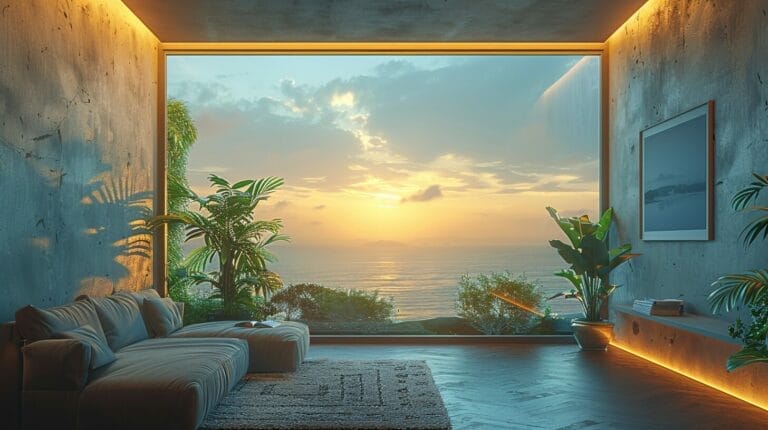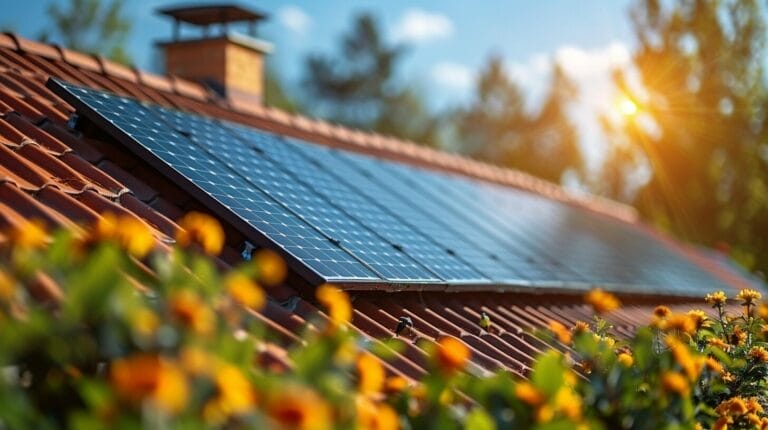Why Are LED Lights Better Than Incandescent Bulbs? Here’s Why
When we consider upgrading our lighting, it’s essential to weigh the benefits of LED lights compared to traditional incandescent bulbs. LEDs not only consume less energy but also last considerably longer, making them a more economical choice in the long run. But energy savings and longevity are just the beginning. What about the quality of light they produce and the variety of options available?
Let’s explore how LEDs can revolutionize our lighting experience and why they might be the smarter choice for both our wallets and the planet.
Key Takeaways
- LEDs consume up to 80% less energy than incandescent bulbs, reducing electricity costs.
- LEDs have a significantly longer lifespan, lasting up to 25 times longer than incandescent bulbs.
- LEDs provide superior light quality with higher Color Rendering Index (CRI) for vibrant, true-to-life colors.
- LEDs contribute to a smaller carbon footprint by lowering energy consumption and waste.
- LEDs offer versatile options, including dimmable bulbs and color-changing strips, for modern lighting solutions.
Understanding the Basic Difference Between Incandescent and LED Lights

The fundamental difference between incandescent and LED lights lies in their technology and design. Traditional incandescent light bulbs generate light by heating a filament until it glows—a method that’s incredibly inefficient with most of the energy wasted as heat.
LED technology, on the other hand, uses a semiconductor to produce light via electroluminescence—a far more efficient process. LEDs convert a higher percentage of electrical energy into visible light, reducing waste and saving power. This technological advantage translates to a substantially extended lifespan. While an incandescent light bulb typically lasts about 1,000 hours, an LED can shine brightly for up to 25,000 hours or more. This makes LEDs a modern marvel and an economically sound choice.
By understanding these fundamental differences, we empower ourselves to make better, smarter decisions for our homes and the environment.
Exploring the Energy-Efficiency Factor: LEDs vs Incandescents

LED lights far outperform incandescent bulbs in terms of energy consumption, making them a wise choice for both our wallets and the environment. LEDs consume up to 80% less energy than incandescents. This energy efficiency directly translates into lower electricity bills and significant environmental benefits. Incandescents waste a substantial amount of energy as heat, while LEDs convert most of their energy into light—a reduction in wasted energy that cuts down on our electricity costs and shrinks our carbon footprint.
To better understand the advantages, consider this:
- Energy consumption: LEDs use significantly less energy.
- Lower electricity bills: Less energy usage equates to reduced costs.
- Environmental benefits: Less energy waste results in a smaller carbon footprint.
- Longevity: LEDs last much longer, reducing waste and replacement costs.
Delving into the Difference in Light Quality and Color

Understanding the differences in light quality and color between LEDs and incandescent bulbs is crucial for informed lighting choices. LEDs offer superior light quality and customization options compared to incandescents. A key factor is color temperature, which measures the warmth or coolness of light, ranging from warm (yellowish) to cool (bluish). LEDs come in various color temperatures, allowing us to tailor the light ambiance to our needs.
Another critical aspect is the Color Rendering Index (CRI), which indicates how accurately a light source reveals colors compared to natural light. LEDs typically have a higher CRI than incandescent bulbs, making colors appear more vibrant and true-to-life. This is particularly beneficial in settings where color distinction is vital, such as art studios or retail environments.
In a nutshell:
| Feature | LEDs | Incandescent Bulbs |
|---|---|---|
| Color Temperature | Variable (2700K-6500K) | Fixed (~2700K) |
| CRI | Typically 80-90+ | Around 100 |
| Light Quality | Customizable | Warm and Consistent |
| Energy Efficiency | High | Low |
| Lifespan | 15,000-50,000 hours | 1,000-2,000 hours |
With these advantages, LEDs offer innovative solutions for creating the perfect light ambiance in any setting.
Cost Considerations: Initial Investment vs Long-term Savings

Switching to LED lights might seem costly initially, but the long-term savings are substantial. Although the upfront cost of an LED bulb is higher than that of an incandescent light, when we consider the potential savings over time, the financial benefits become clear. LEDs consume far less energy and have a much longer lifespan. This means that although the initial cost might be higher, the long-term savings on our electricity bills and replacement costs are significant.
Here’s the breakdown:
- Energy Efficiency: LED lights use up to 80% less energy than incandescent bulbs, directly lowering electricity bills.
- Longevity: LED bulbs can last up to 25 times longer than incandescent lights, reducing replacement frequency and costs.
- Maintenance Savings: Fewer replacements mean significantly reduced maintenance costs and efforts.
- Environmental Impact: Lower energy consumption and fewer replacements equate to a smaller carbon footprint.
Practical Aspects: Ease of Installation and Variety in LED Lights

Aside from the financial benefits, the practical aspects of using LED lights—such as their ease of installation and the wide variety of options available—are worth considering. Installation is straightforward with LEDs, often accompanied by simple, user-friendly guides. This ease of installation means you can quickly upgrade your lighting without professional assistance.
The variety offered by LEDs—from dimmable bulbs to color-changing strips—allows for tailoring to specific needs and stands in stark contrast to the limited choices provided by incandescent bulbs. User experiences consistently highlight the seamless conversion from incandescent bulbs to LEDs, making them a superior choice for anyone looking to modernize their lighting.
Conclusion
To sum up, we can’t overlook the clear benefits of LED lights over incandescent bulbs. They save us money in the long run, reduce our environmental impact, and offer better light quality.
While the initial investment might be higher, the long-term savings and fewer replacements make it worthwhile.
With customizable options and ease of installation, switching to LEDs is a smart choice for both our wallets and the planet. Let’s make the switch today!
Frequently Asked Questions
What is the difference between LED bulbs and incandescent bulbs?
LED bulbs are more energy-efficient compared to incandescent bulbs, as they convert a higher percentage of energy into light rather than heat.
Are LED lights brighter than incandescent bulbs?
Yes, LED lights are known to deliver a bright light output while using less energy compared to traditional incandescent bulbs.
How do LED lights compare to incandescent bulbs in terms of lifespan?
LEDs have a much longer lifespan compared to incandescent bulbs, making them a more durable and cost-effective option in the long run.
Are LED lights safer than incandescent bulbs?
LED lights operate at a much lower temperature than incandescent bulbs, making them safer to use, especially in households with children or pets.
Can LED lights be used with solar power?
Yes, LED lights are compatible with solar power systems, making them a sustainable choice for outdoor lighting solutions.







